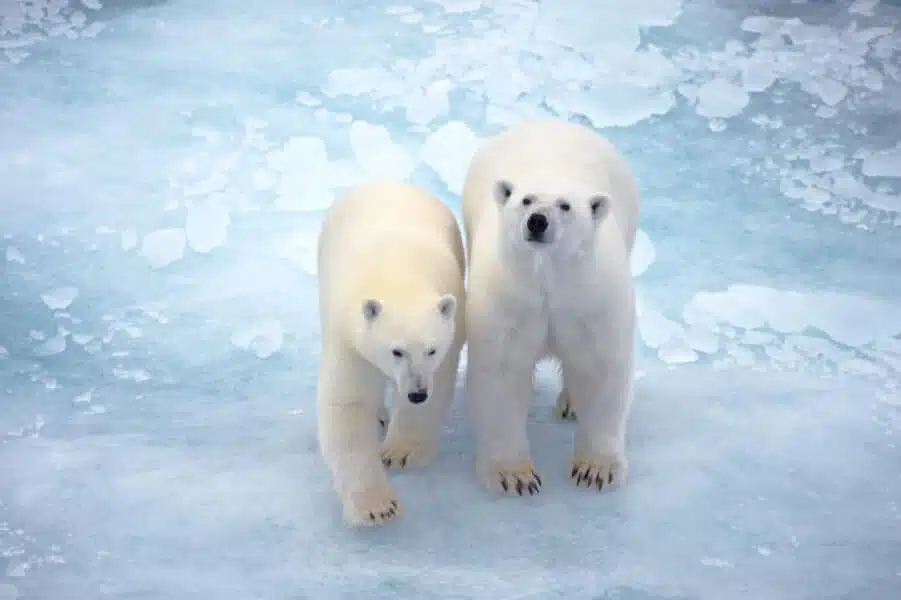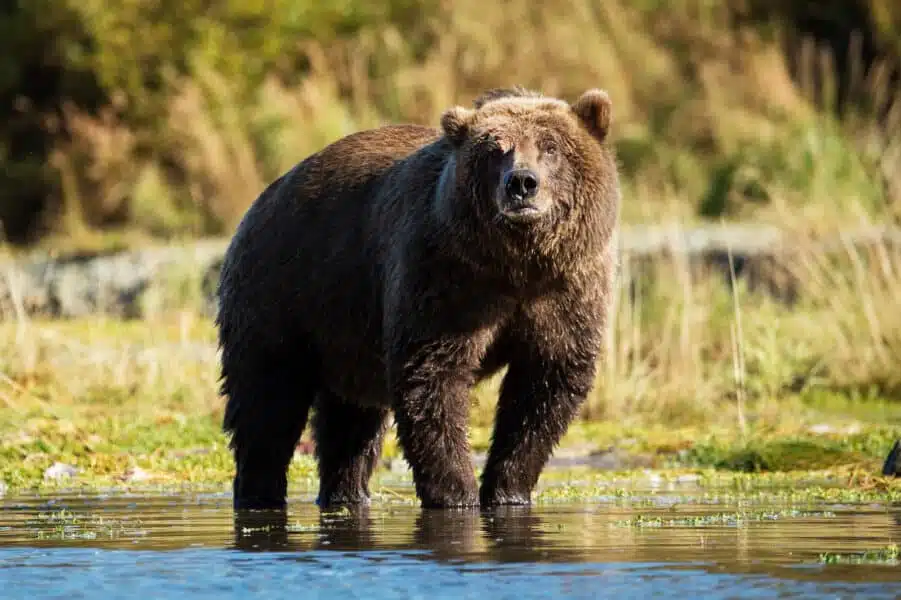From the Hautes-Pyrenees to Hudson Bay, from Eurasia to the Arctic and from Abruzzo to Svalbard, many of our planet’s wildernesses are home to bears. Although humans must be as unobtrusive as possible in the presence of these creatures, you can, however, admire their majesty and strength during an excursion or cruise. Here is a short introduction to these species which can be found and observed all around the world.
The white bear: the King of the Arctic
Weighing 600 kilos as adults, standing nearly 3 metres tall and eating an exclusively carnivorous diet, white bears, more commonly known as « polar bears », are nothing if not impressive. If you want to catch a glimpse of them, then these are the best nature parks and reserves to visit:Wapusk National Park, in Canada, is home to a few dozen, and hundreds more live on Baffin Island, and the eastern coast of the island of Spitsbergen, which they roam across several times a year. The sea reveals their skills: in winter, the white bear can hunt for prey both on the ice and in the water. The largest terrestrial carnivores, white bears are rarely found in a group, however, if you are very lucky, you may witness a touching family moment on the sea ice where bear cubs stay with their mother until they are weaned. Unforgettable.

The brown bear: a prince of the forests
This colour-based name refers to a set of cousins in the Ursidae family, who live in distinct regions and have adopted different behaviour. The Kodiak bear, found on the island of the same name in Alaska, shares many traits with its polar bear neighbour, especially is weight and imposing size. However, it behaves like a brown bear, especially when it comes to hibernating : in the middle of spring, they emerge from their dens, providing an opportunity to observe them in groups. Smaller (although still nearly 2 metres in size) and much more inclined to eat a plant-based diet are grizzly bears which live all over the forests and highlands of North America. Kluane National Park and Reserve. in the Yukon, Canada, is home to a “varied” population – this species harbours vast genetic diversity. In Alaska, a unique spectacle can be seen in July: grizzly bears gather in Katmai National Park and Preserve, to hunt salmon en masse. The fish enjoyed during this amazing feast provide them with enough fat and proteins to keep warm throughout the winter.

To safely observe bears, you must:
- Always be accompanied by a guide, whether you are on land or water
- Stay extremely quiet: bears are sensitive to the slightest noise
- Have a good pair of binoculars on hand: almost all bear sightings are at a distance
The black bear: the Marquis of the mountains
There are two main species of black bear in the world: the American black bear and the Asian black bear. The latter lives in the Himalayas, seeking forests to settle in like its panda neighbour. But it is its American cousin that you have the best chance of observing as there are over two million of them in the north of the continent. Measuring approximately 1.70 m tall with a weight of up to 250 kilos, it is a treat for wildlife enthusiasts visiting Fish Creek, British Columbia. Along the rivers, magnificent creatures undertake perilous fishing trips, giving up on their diet of wild berries to hunt a few freshwater fish once summer comes around. Hikers in the area may chance upon Kermode bear footprints: although the majority of them look much like black bears, some have a white coat due to a mutant gene. Sightings of these bears in the wild are very rare, except on Gribbell Island, Princess Royal Island and Roderick Island.

A large family all around the world
Bears of unusual origins live scattered across different regions of the world: the sun bear or honey bear, notable due to its small stature (60 cm shoulder height) populates certain forests in South-East Asia and loves honey, as does the sloth bear, which thrives in the forests of India. In Europe, the brown bear prevails, in particular near the Austrian and Slovenian Alps. Finally, Latin America is home to one of the most astonishing subspecies of the Ursus genus: the spectacled bear. Recognisable by their two-tone muzzle, they are extremely rare, although you can try to catch a glimpse of them near Santa Lucia in Ecuador where they live with exotic fauna including Choco toucans and cotingas.

To find out more, watch/read:
- The book The Bear: History of a Fallen King by Michel Pastoureau, about the symbolic figure of the bear in Europe. And Ultima Thule: Explorers and Natives in the Polar North by Jean Malaurie, about bears in the Far North.
- The documentary Land of the Bears, by Guillaume Vincent, about a particular subspecies: the Kamchatka brown bear.

PONANT takes you there!
Set sail for an expedition cruise aboard a state-of-the-art yacht and head off for a bear encounter.



